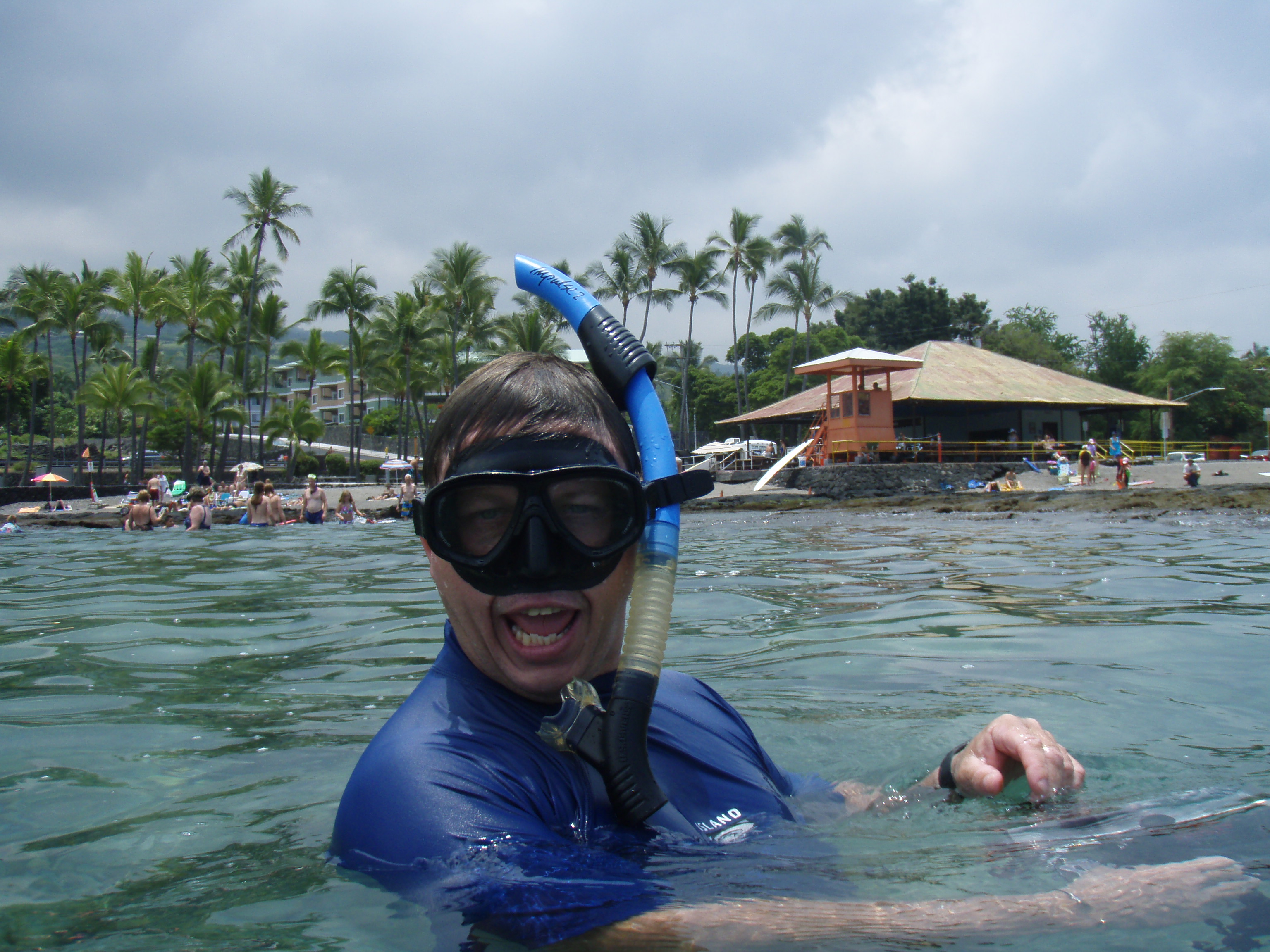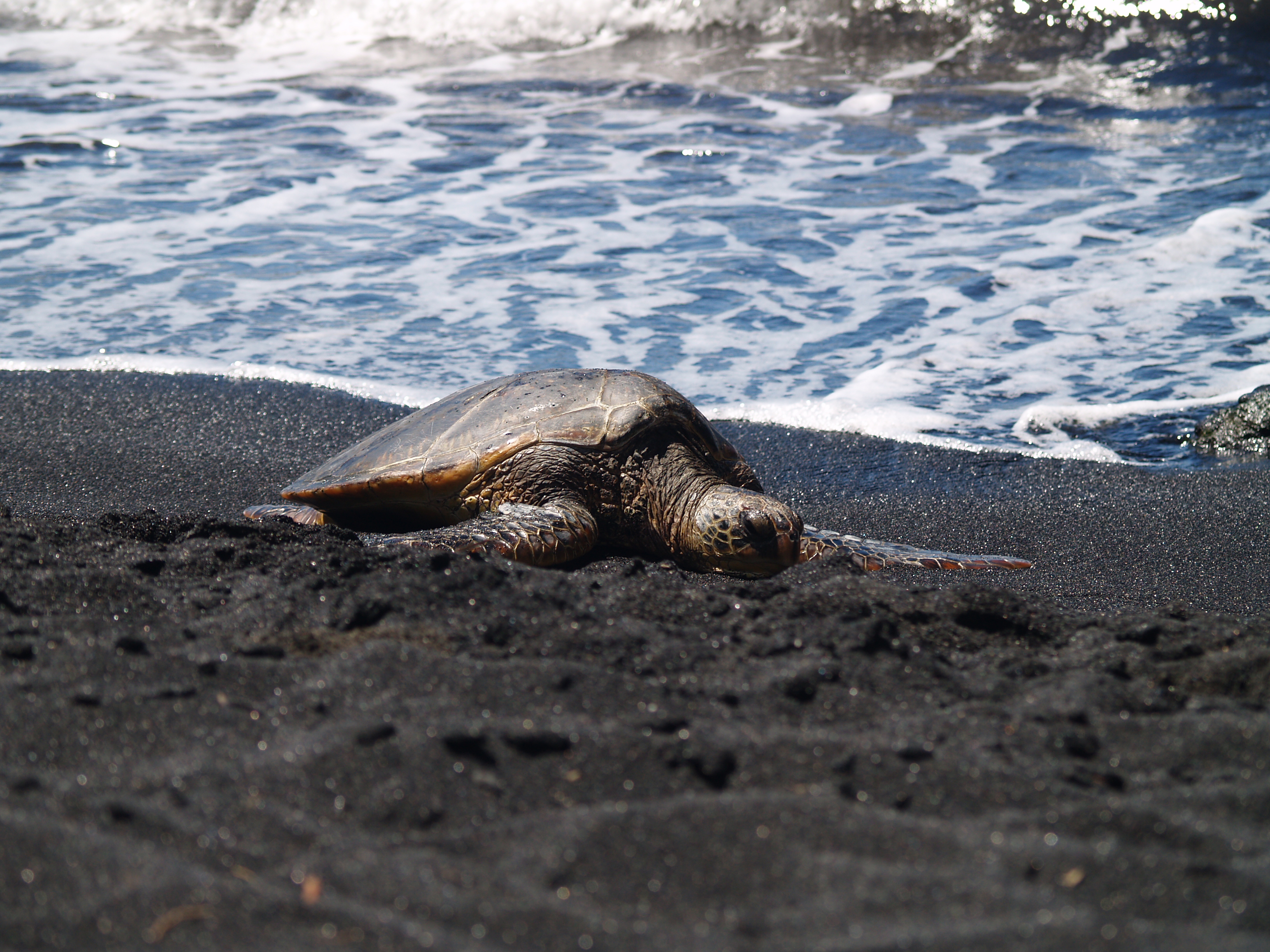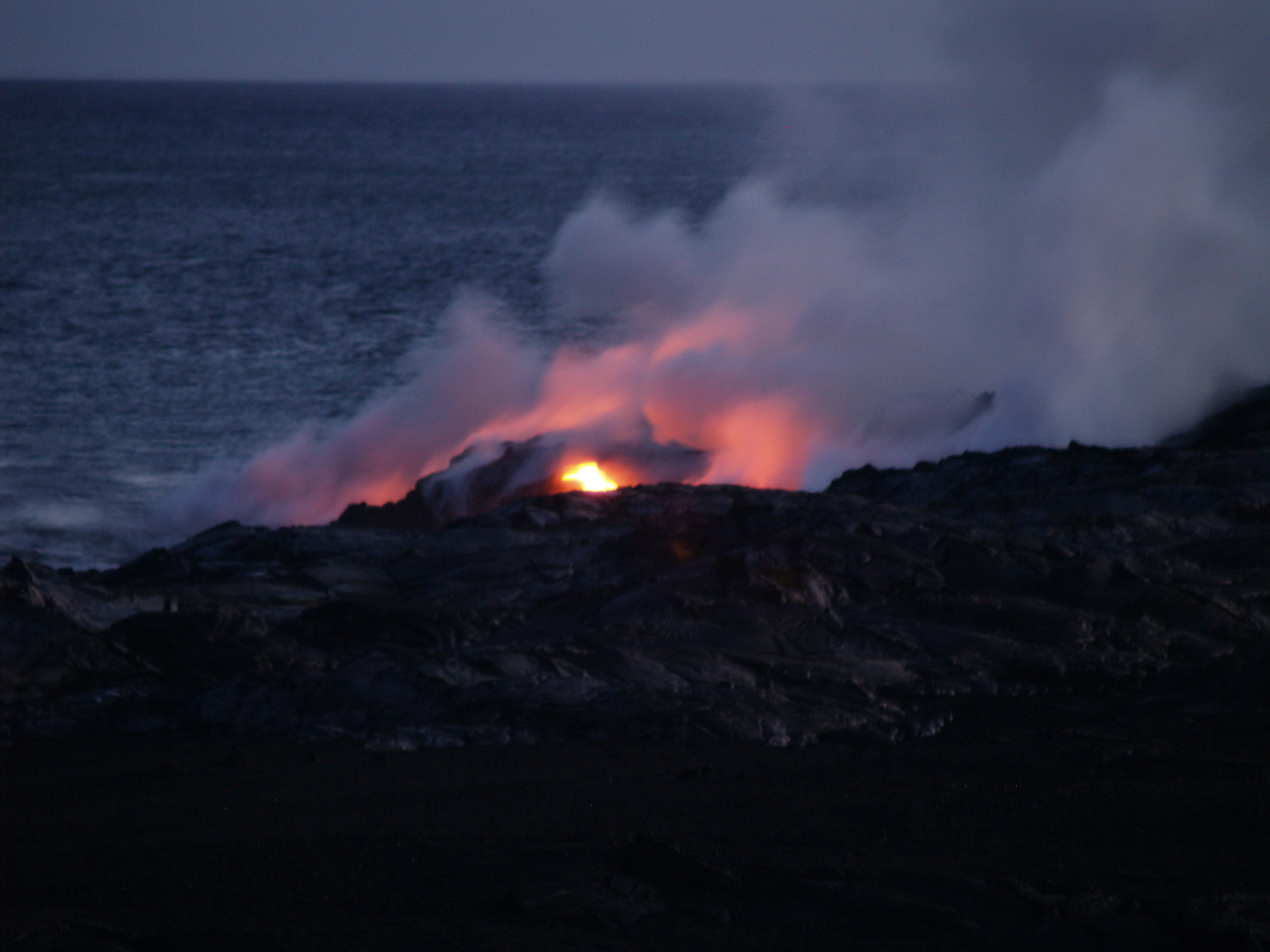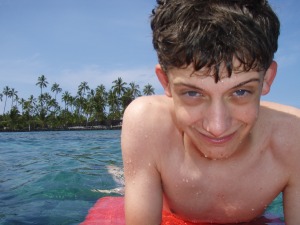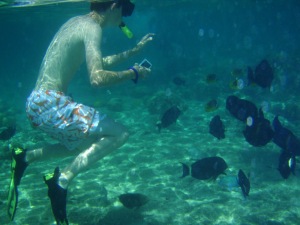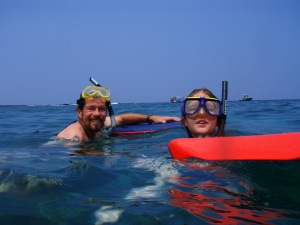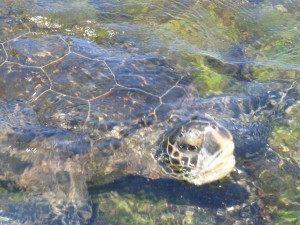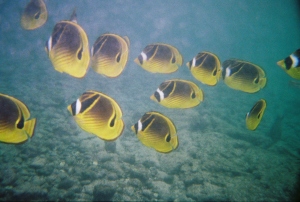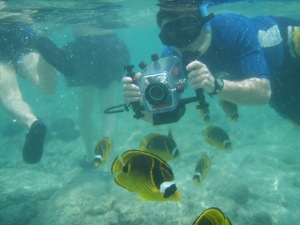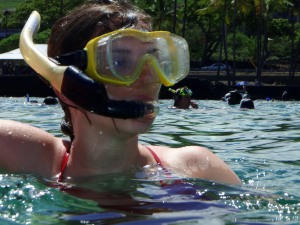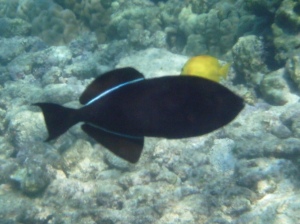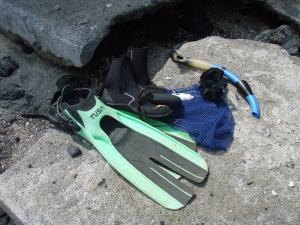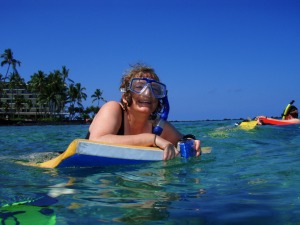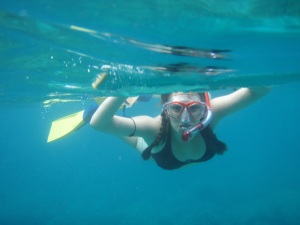Part I of this series discuses Snorkeling Gear; Part II of this series covers Snorkeling Technique; Part III covers Snorkeling Etiquette; Part IV discusses Snorkeling Safety and Part V covers Big Island Snorkel Spots.
Waialea Beach in Kohala is the gateway to many small, secluded secret beaches on the Big Island...but why go any farther than this? It's perfect! Photo by Donnie MacGowan

Of all the Hawaiian Islands, because it is the youngest, the Big Island has the fewest and smallest beaches…this leads to crowding during the height of tourist season at some beaches. Because Hawaii is still rural, there are still some wilderness (hike-to-only) beaches; a few of them are among the best on the island.
Many wild beaches may be camped upon but you must apply for a permit from the appropriate agency. Overnight camping on Hawaii beaches is simplified because of the mild climate--usually I take a few quarts of water, a couple sandwiches, my camera, dry clothes for post-snorkeling comfort, a fleece blanket and rice mat to sleep on (a beach towel will suffice) and a small tarp on the off-chance it rains. The key here is that if the weather turns truly ugly, you are rarely more than an hour from your car. You may wish to bring a few extra quarts of water to rinse the salt off after swimming—it’s difficult to sleep comfortably with salty skin.
Two things to bear in mind—although is sometimes doesn’t seem it, Hawaii DOES have tides…camp well back of the beach area. Secondly, beach fires are not only illegal, they are hugely dangerous on most beaches on the west side.
Ke-awa-iki Beach (park off Highway 19 just north of Mile 79; walk along gravel road towards the ocean to a fence and foot trail; about 15 minutes to beach): A little walking over a lava road and a’a rewards you with a beautiful beach many locals don’t know about. This tiny black-sand beach has good snorkeling on the south side, where there is still a pocket of white sand. This unique black and white sand beach was created after the 1859 eruption of Mauna Kea, when lava reached the north end of the beach, where the black sand is today. Further south along the beach, the recent black sand has not had time to thoroughly mix with the pre-existing white sand.
If one continues south there are numerous tide pools to explore.
Hiking north, one comes to Pueo Bay, where freshwater springs make the snorkeling interesting but weird, with large temperature and salinity gradients. If one takes the trail heading inland towards a conspicuous growth of hala trees, one comes to a pair of lovely golden pools. A golden algae gives these pools their distinctive color, but be sure not to damage the growth by walking on it. Finish the trek by hiking back across the a’a…approximately 4 miles, round trip.
Makalawena Beach on the Big Island is the epitome of Hawaiian white sand beaches...and it's always uncrowded: Photo by Donald MacGowan
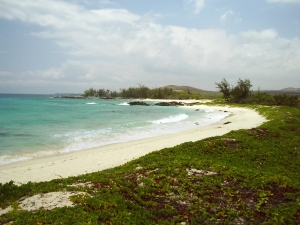
Makalawena Beach (turn off Highway 19 south of Mile 90 at Kekahakai State Park; at the end of the road, take obvious trail north over lava field; the trail traverses rough lava and keawe breaks, so shoes are required): Makalawena is the finest swimming and snorkeling beach on the island and the most beautiful beach setting. This beach sports a series of coves, refreshing shade, big sand dunes and a nice freshwater pond to rinse-off in. A great backpacking getaway, do not forget your camera; this hike will be a major highlight of your trip to the Big Island.
The land fronting the beach is owned by Bishop Estate and is slated to be turned into a development of condos and resorts; vigilance and protest on the part of locals and visitors is the only way we can keep this last, wild Kona beach wild.
Pawai Bay (in Kailua Kona, drive to the end of the Old Airport County Beach Park; hike along the ocean to the first, obvious, sandy bay): Spectacular, secluded, secret; Pawai Bay is perhaps the most interesting snorkeling spot on the island. Walk along the sea cliffs and coves about 15-20 minutes north, to the Queen Lilioukalani Children’s Camp at Pawai Bay. Remember, non-Hawaiians are restricted to travel along the tidal zone and only the edge of the shoreline…to venture even a few feet inland is trespassing.
Pawai Bay hosts a choice sandy beach with a small channel leading to open ocean and exciting snorkeling. Many charter snorkel tours bring clients here, but you can visit free. Submerged caverns, arches and caves are filled with fish and coral and pristine water. From the shore, this is not a snorkel adventure for rank beginners.
Swim through the sandy bay to the channel and out to the cliffs. Be wary of surginess and don’t go in when the surf is big. Once in the larger bay, look back toward shore where numerous small channels lead shoreward but dead-end in cliffs; your passage back is the only channel through which you can see sand at the end.
The bay itself lies on Queen Lilioukalani Trust lands. Non-native Hawai’ians are not allowed on the land or to use the facilities. State beach access laws allow you to visit as long as you stay immediately along the shoreline; the beach is patrolled 24/7.
Kealakekua Bay from the Captain Cook Monument. Simply the finest snorkeling. Ever. Photo by Donald MacGowan
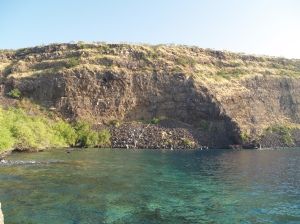
Captain Cook Monument (The trail leaves the Napo’opo’o Road right at telephone pole number 4, just 500 feet below where it drops off Highway 11; parking is tight, but safe): This hike is a fine walk through tall grass, open lava fields and dryland forest, opening onto one of the most pristine ocean beaches in the world. Hiking down to the Monument is great fun—the return is hot, thirsty and strenuous but rewards with panoramic views of the coast. The 2.5-mile hike takes about an hour down, somewhat more to return. The trail runs straight down the left side of a rock wall toward the sea. As the pitch straightens out, keep to the left at the fork and proceed to the beach through the abandoned village. You strike shore several hundred feet northwest of the monument—remember to bear right at the trail junction when returning, or you face a long and unpleasant time wandering the a’a fields.
Snorkeling at the monument is wild and scenic, from shallow tidepools north of the wharf to the steep drop-off under the cliffs. There is a concrete marker in the tidal zone denoting the exact spot Cook fell somewhat north of the actual monument.
Honomalino Beach (turn off Highway 11 just south of mile marker 89, drive through Miloli’i; start hiking between the county park and a yellow church. Keep along the right at forks in the trail, in and out of the surf line, to avoid private property): A true gem of West Hawai’i and rarely crowded, Honomalino Bay is reached by a 20 minute hike from the south end of Miloli’i Beach County Park. Snorkeling is very interesting on the north side in the rocks, when the surf is low. The water, though very clear, is sometimes quite cold due to spring discharge in the sand on the beach.
Mahana Green Sand Beach at South point on the Big Island: Photo by Donnie MacGowan

Mahana Green Sand Beach (Turn off Highway 11 to South Point, follow signs to Mahana Boat Launch. Park just above the boat ramp for the 2 1/4 mile hike to the Green Sand Beach): Absolutely unique to Hawai’i, beautiful and strange, are the green sand. The green sand beach at South Point is the best known, largest and most accessible of these. The sand grains here are olivine crystals, washed out of a cinder cone that has been partially breached by the sea.
When you reach the end of the trail, you are a hundred or so feet above the beach on the rim of the remnant of the crater. At the start, there is a tricky spot edging over a 3-foot ledge, but below this the trail is wide and clear One can also easily scramble down middle of the cone, but this can be slippery. Although tricky to spot on the way down, from the beach looking up the way back to the crater rim is easy to follow.
The beach lies in the interior of the cone, and the protected cove makes for a wonderful swimming/snorkeling spot but be wary of currents. Do not go out far, nor in at all in high surf or strong winds. The bizarre color of the water shrieks for color photographs, particularly underwater photographs taken while snorkeling.
For more information about visiting and touring Hawaii in general, and exploring the fabulous snorkeling on the Big Island in particular, visit http://www.tourguidehawaii.com. For information about the author, go here.

